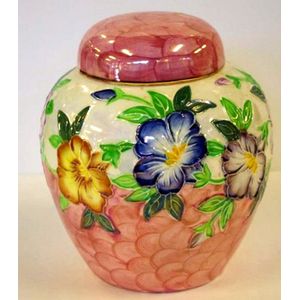Maling pottery was produced in the north east of England for just over two centuries. The pottery was founded at North Hylton near Sunderland in 1762, by Robert Maling, and transferred to Newcastle upon Tyne in 1817. It was Robert Maling’s son, Christopher Thompson Maling II, who took the business in a new and profitable direction in the 1850s. He devised a way to make pottery. The company was known for its high-quality tableware, decorative pieces, and packaging materials.
The company's early years were focused on the production of utilitarian wares, such as jugs, mugs, and plates. However, in the 19th century, the company began to produce more decorative pieces, such as vases, figurines, and tea sets. The company also began to produce packaging materials, such as labels, boxes, and wrapping paper.
By the 1920s Maling was producing over two hundred new designs a year in a
more...
successful attempt to meet the changing tastes of the British public. Many of these designs were from the hand of the father and son team Lucien Emile and Lucien George Boullemier. Both had been recruited from the Staffordshire potteries. These designers helped to create a new look for the company's products, which were now known for their Art Deco style. The company also began to produce a range of novelty items, such as salt and pepper shakers, ashtrays, and figurines.
By the outbreak of war, the Maling family members who had been directly involved in running the pottery were deceased and the business was in the hands of trustees. After the war the pottery came into the hands of new owners, the Hoult family. Although investment was made, the scale of operations was reduced, with fewer staff having to put up with a downsized working area. In a slow spiral of decline fewer new patterns were introduced and fewer products sold.
Eventually, competition from more modern and streamlined potteries caused Maling to close in 1963. In two centuries it had produced over 16,500 patterns. Items ranged from simple kitchen wares such as pudding basins to highly gilded, lustred and enamelled pieces for display in fashionable homes.
less...



